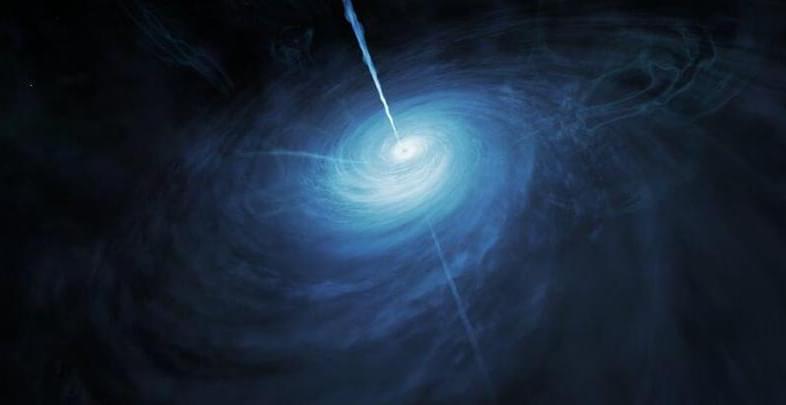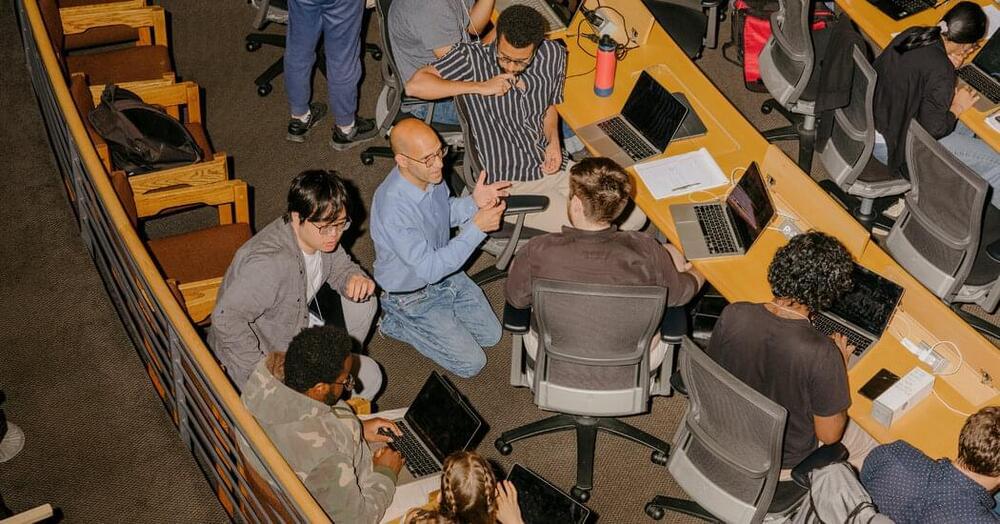Jul 3, 2023
The Humane AI Pin wants to end our dependence on screens
Posted by Jose Ruben Rodriguez Fuentes in categories: robotics/AI, wearables
The wearable device from former Apple executives will arrive later this year, the company says.
The wearable device from former Apple executives will arrive later this year, the company says.

https://youtube.com/watch?v=K-70S1oycR4
1:33…“10 years”.
Dive into the fascinating world of aging research with this thought-provoking video. Join us as we explore the latest breakthroughs and scientific advancements on the quest to reverse aging. Discover the potential strategies, therapies, and technologies that hold promise for extending healthspan and pushing the boundaries of human longevity. Get ready to embark on an exciting journey towards understanding the future of aging reversal.
Continue reading “How Long Until We Reverse the Clock? | Dr David Sinclair” »

Because of a peculiar effect velocity has on the appearance of the passage of time, our observations make it seem like time ran slower when the Universe was just a baby.
At least, that’s how it appears to us, at a light travel time of nearly 13 billion years away. This is called time dilation, and astrophysicist Geraint Lewis of the University of Sydney in Australia and statistician Brendon Brewer of the University of Auckland have seen it in the early Universe for the first time by studying the fluctuations of bright galaxies called quasar galaxies during the Cosmic Dawn.
Continue reading “Time Appears to Have Run 5 Times Slower in The Early Universe” »
Crystals that can freely conduct electrons, but not heat, hold great potential for numerous applications. A team of researchers has developed a method for discovering and developing these materials.

The results are published in the Proceedings of the National Academy of Sciences (PNAS).
Continue reading “Conductivity Becomes Crystal Clear in New Study” »

Scientists have for the first time observed the early universe running in extreme slow motion, unlocking one of the mysteries of Einstein’s expanding universe. The research is published in Nature Astronomy.
Einstein’s general theory of relativity means that we should observe the distant—and hence ancient— universe running much slower than the present day. However, peering back that far in time has proven elusive. Scientists have now cracked that mystery by using quasars as “clocks.”
Continue reading “Quasar ‘clocks’ show the universe was five times slower soon after the Big Bang” »
A bullet piercing the protective armor of a first responder, a jellyfish stinging a swimmer, micrometeorites striking a satellite: High-speed projectiles that puncture materials show up in many forms. Researchers constantly aim to identify new materials that can better resist these high-speed puncture events, but it has been hard to connect the microscopic details of a promising new material to its actual behavior in real-world situations.
To address this issue, researchers at the National Institute of Standards and Technology (NIST) have designed a method that uses a high-intensity laser to blast microscale projectiles into a small sample at velocities that approach the speed of sound. The system analyzes the energy exchange between the particle and the sample of interest at the micro level then uses scaling methods to predict the puncture resistance of the material against larger energetic projectiles, such as bullets encountered in real-world situations. This new method, described in the journal ACS Applied Materials & Interfaces, reduces the need to perform a lengthy series of lab experiments with larger projectiles and bigger samples.
“When you’re investigating a new material for its protective applications, you don’t want to waste time, money and energy in scaling up your tests if the material doesn’t pan out. With our new method we can see earlier if it’s worth looking into a material for its protective properties,” said NIST chemist Katherine Evans.
Using the Spektr-RG (SRG) spacecraft and the Zwicky Transient Facility (ZTF), an international team of astronomers has discovered a new eclipsing cataclysmic variable system, which received designation SRGeJ045359.9+622444 (or SRGeJ0453 for short). The finding is reported in a paper published June 22 on the pre-print server arXiv.
Cataclysmic variables (CVs) are binary star systems consisting of a white dwarf primary that is accreting matter from a normal star companion. They irregularly increase in brightness by a large factor, then drop back down to a quiescent state. These binaries have been found in many environments, such as the center of the Milky Way galaxy, the solar neighborhood, and within open and globular clusters.
AM CVn stars (named after the star AM Canum Venaticorum), are a rare type of CV in which a white dwarf accretes hydrogen-poor matter from a compact companion star. In general, such systems are helium-rich binaries, not showing traces of hydrogen in their spectra, with orbital periods between five and 65 minutes.
My Sony Music interview is now out. 40 min of #transhumanism adventures, AI, Transhumanist Bill of Rights, & politics. A professional team of producers and host Katherine Rowland put this together! It’s really fun and unique!
In 2015, journalist Zoltan Istvan became the first person to run for president on a transhumanist platform. His campaign centered a right to unlimited life for all humans…as well as cyborgs and robots. Zoltan Istvan believes that how people treat AI will become the civil rights battle of our time. And that he would be the right leader to help guide America through the singularity.
That is, of course, until the AI revolution actually began.
© 1998 — 2023 Nexstar Media Group Inc. | All Rights Reserved.
\t\t\t\t.
\t.
\t\t.
\t\tTrending on NewsNation.
\t\t.
\t.

For thousands of years, mathematicians have adapted to the latest advances in logic and reasoning. Are they ready for artificial intelligence?
